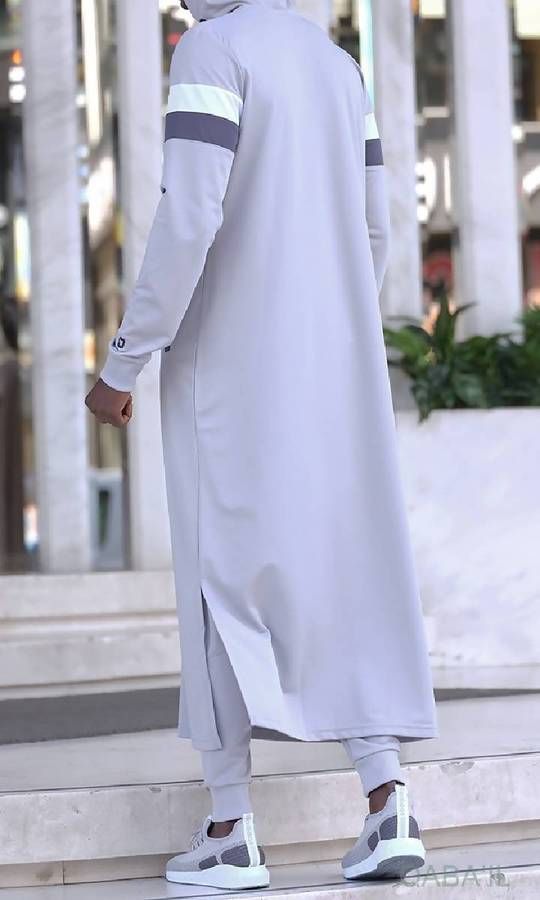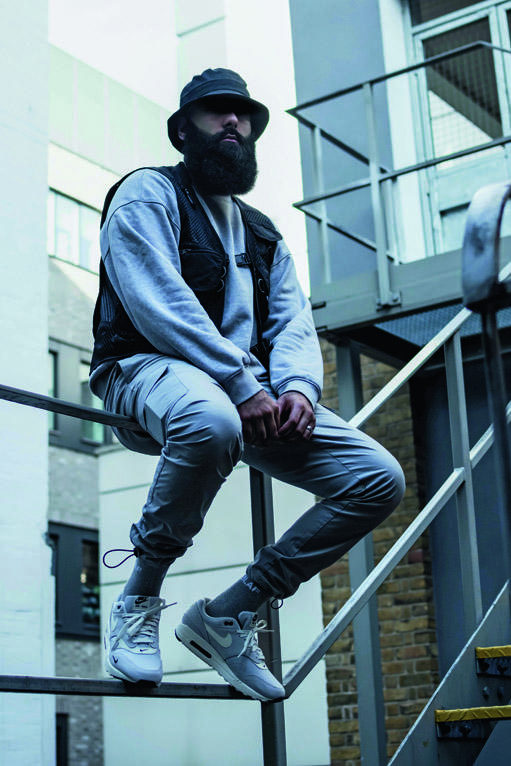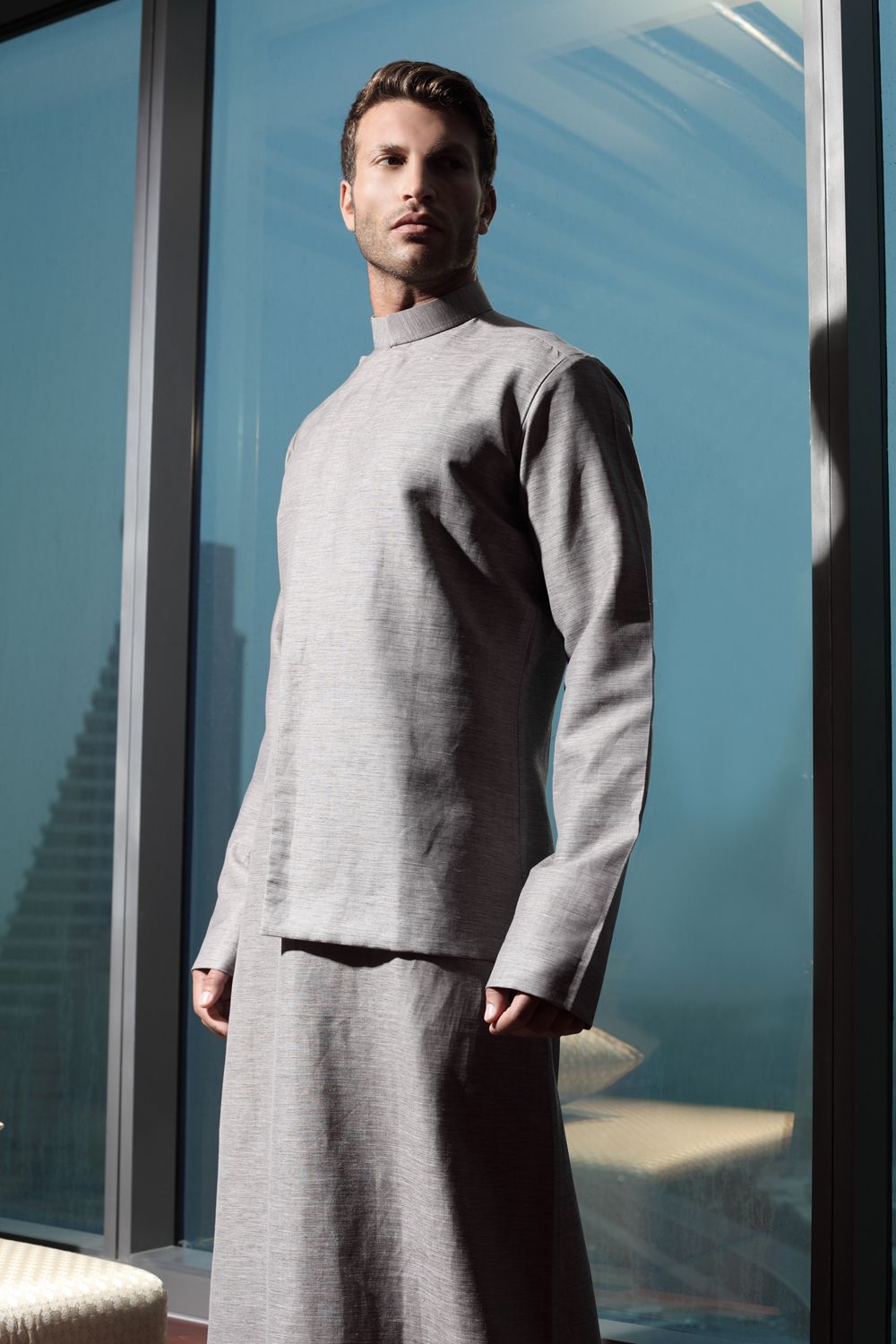

In the dynamic realm of fashion, Islamic men’s clothing stands as a captivating testament to the harmonious fusion of tradition, modernity, and personal expression. While deeply rooted in centuries-old customs and religious principles, modern Islamic attire has gracefully evolved to encompass a diverse spectrum of styles, reflecting the vibrant tapestry of Muslim communities worldwide. Embark on a journey to uncover the key elements that define modern Islamic men’s clothing, explore the intricate interplay of factors that influence its continuous evolution, and delve into the profound significance of fashion in shaping personal identity and cultural expression.
A Canvas of Essential Elements: Unveiling the Cornerstones of Modern Islamic Men’s Attire
The world of modern Islamic men’s clothing is as diverse and multifaceted as the cultures and traditions it represents. However, certain common elements transcend geographical boundaries, forming the foundational pillars of Islamic attire:
-
- Thobe (Jubbah): A long, loose-fitting robe, often reaching to the ankles, the thobe is a staple garment in many Arab countries and parts of the Middle East. Typically crafted from lightweight, breathable fabrics like cotton or linen, the thobe ensures comfort and practicality in warm climates.
-
- Dishdasha: Sharing a close resemblance to the thobe, the dishdasha is a long, flowing robe prevalent in South Asia and East Africa. It is often distinguished by its intricate embroidery or decorative stitching adorning the neckline and cuffs, adding a touch of elegance and personalization.
-
- Kurta: A versatile garment embraced across the Muslim world, the kurta is a loose-fitting shirt or tunic that typically extends below the knees. It is often paired with salwar (loose-fitting trousers) or pajamas (drawstring pants) to create a complete ensemble.
-
- Shalwar Kameez: Originating in the rich cultural heritage of South Asia, the shalwar kameez is a two-piece ensemble comprising loose-fitting trousers (shalwar) and a long shirt (kameez). This versatile attire is a popular choice for both casual and formal occasions, seamlessly adapting to diverse settings.
-
- Sherwani: A long, tailored coat, often reaching to the knees or ankles, the sherwani is typically reserved for special occasions like weddings or religious festivals. Its grandeur lies in the intricate embroidery or brocade work that adorns the garment, adding a touch of sophistication and cultural significance.

- Sherwani: A long, tailored coat, often reaching to the knees or ankles, the sherwani is typically reserved for special occasions like weddings or religious festivals. Its grandeur lies in the intricate embroidery or brocade work that adorns the garment, adding a touch of sophistication and cultural significance.
A Tapestry of Influences: Unveiling the Forces Shaping the Evolution of Islamic Men’s Clothing
The evolution of modern Islamic men’s clothing is not merely a matter of chance; it is a dynamic process shaped by a complex interplay of factors, including:
-
Religious beliefs and practices: Islamic principles of modesty and humility play a significant role in shaping Islamic men’s clothing. Garments are often designed to cover the body appropriately, adhering to Islamic guidelines while maintaining comfort and practicality.
-
Cultural norms and traditions deeply influence the styles and preferences of Islamic men’s clothing. Furthermore, regional variations, ethnic groups, and local customs all contribute to the diverse tapestry of Islamic attire. In addition, individual preferences and personal style play a crucial role in the evolution of modern Islamic men’s clothing. Muslim men worldwide express their unique personalities and tastes through their choice of attire, creating a dynamic and ever-evolving landscape of fashion. Moreover, the influence of global fashion trends cannot be overlooked in the evolution of Islamic men’s clothing. Designers and fashion enthusiasts worldwide are increasingly incorporating Islamic elements into their designs, creating a fusion of traditional styles with modern sensibilities.
A Journey Through Diverse Regions: Unveiling the Regional Variations of Modern Islamic Men’s Clothing
The world of modern Islamic men’s clothing is as diverse as the Muslim communities it represents. Regional variations in styles, fabrics, and preferences reflect the rich cultural heritage and unique traditions of different Muslim populations:
-
- In the Middle East, thobes and dishdashas are prevalent, often made from lightweight, breathable fabrics like cotton or linen. Neutral colors and simple designs are common, reflecting the region’s warm climate and cultural norms. In contrast, South Asian Islamic men’s clothing is characterize by vibrant colors, intricate embroidery, and a wider variety of styles. Kurtas, shalwar kameez, and sherwanis are popular choices, often made from silk, brocade, or cotton. Additionally, African Islamic men’s clothing reflects the continent’s rich cultural diversity. Bold colors, geometric patterns, and locally sourced fabrics are frequently use, creating a vibrant and visually stunning aesthetic. Furthermore, Muslim men in Europe and North America often navigate a blend of cultural influences. They may incorporate elements of traditional Islamic attire into their everyday wear or opt for more modern interpretations that adhere to Islamic principles of modesty.

A Modern Renaissance: Unveiling the Flourishing Landscape of Modern Islamic Fashion Trends
The realm of modern Islamic men’s clothing is experiencing a period of exciting transformation. Several key trends are shaping the future of Islamic fashion:
-
Furthermore, modern Islamic designers are skillfully incorporating contemporary elements like slimmer fits, bold patterns, and a wider range of colors into traditional garments, creating a stylish and modern aesthetic that resonates with younger generations. In addition, modern Islamic clothing emphasizes comfort and functionality alongside style, with breathable fabrics, well-tailored cuts, and garments designed for an active lifestyle becoming increasingly popular. Moreover, Islamic streetwear is a burgeoning trend, offering a stylish and contemporary interpretation of Islamic attire. This movement caters to young Muslim men seeking to express their faith and cultural identity through their clothing choices, often incorporating streetwear elements like sneakers and graphic tees. Additionally, a growing number of talented Muslim designers are emerging on the global fashion scene, offering a wider range of stylish and modest clothing options for men. These designers are challenging traditional stereotypes and creating a more inclusive fashion landscape.
A Commitment to Ethics: Unveiling Considerations for Modern Islamic Men’s Clothing
As with any fashion movement, ethical considerations hold significant importance in modern Islamic men’s clothing. Here are some key aspects to consider:
-
Moreover, supporting brands that prioritize fair labor practices and sustainable production methods aligns with Islamic principles of social justice and environmental responsibility. Equally important is the avoidance of exploitation and child labor in the production process. Therefore, it’s crucial to choose clothing produced ethically, ensuring that workers are treat fairly. Additionally, transparency in supply chains is essential, as consumers have a right to know where their clothing comes from and how it make. By supporting brands that provide transparency in their supply chains, consumers can make informed choices and contribute to shaping the future of the Islamic fashion industry.

Fashion and Identity: Unveiling the Significance of Modern Islamic Men’s Clothing
Modern Islamic men’s clothing transcends mere attire; it serves as a powerful tool for expressing personal identity and cultural heritage. Here’s how fashion plays a crucial role:
-
Expression of faith and cultural heritage: By choosing Islamic clothing, Muslim men express their faith and connect with their cultural heritage. It is a way of honoring traditions and fostering a sense of belonging to a global Muslim community.
-
Symbol of personal style and individuality: Modern Islamic clothing allows for the expression of personal style and individuality. Muslim men can choose garments that reflect their unique tastes and preferences, creating a look that is both faithful and fashionable.
-
Bridge between tradition and modernity: Modern Islamic clothing acts as a bridge between tradition and modernity. It allows Muslim men to embrace their faith and cultural heritage while also incorporating contemporary styles and trends.
-
Representation of global Muslim identity: The diverse landscape of modern Islamic men’s clothing serves as a powerful representation of the global Muslim identity. It showcases the richness and vibrancy of Muslim cultures worldwide, fostering understanding and appreciation for diversity.

Conclusion: A Continuously Evolving Tapestry
The world of modern Islamic men’s clothing is a continuously evolving tapestry, woven from the threads of tradition, innovation, and personal expression. As Muslim communities navigate the dynamic world of fashion, their clothing choices reflect their evolving identities and aspirations. Therefore, by understanding the significance of modern Islamic men’s clothing, we gain a deeper appreciation for the rich cultural heritage and vibrant spirit of Muslim communities worldwide.
-
- In the Middle East, thobes and dishdashas are prevalent, often made from lightweight, breathable fabrics like cotton or linen. Neutral colors and simple designs are common, reflecting the region’s warm climate and cultural norms. In contrast, South Asian Islamic men’s clothing is characterize by vibrant colors, intricate embroidery, and a wider variety of styles. Kurtas, shalwar kameez, and sherwanis are popular choices, often made from silk, brocade, or cotton. Additionally, African Islamic men’s clothing reflects the continent’s rich cultural diversity. Bold colors, geometric patterns, and locally sourced fabrics are frequently use, creating a vibrant and visually stunning aesthetic. Furthermore, Muslim men in Europe and North America often navigate a blend of cultural influences. They may incorporate elements of traditional Islamic attire into their everyday wear or opt for more modern interpretations that adhere to Islamic principles of modesty.
